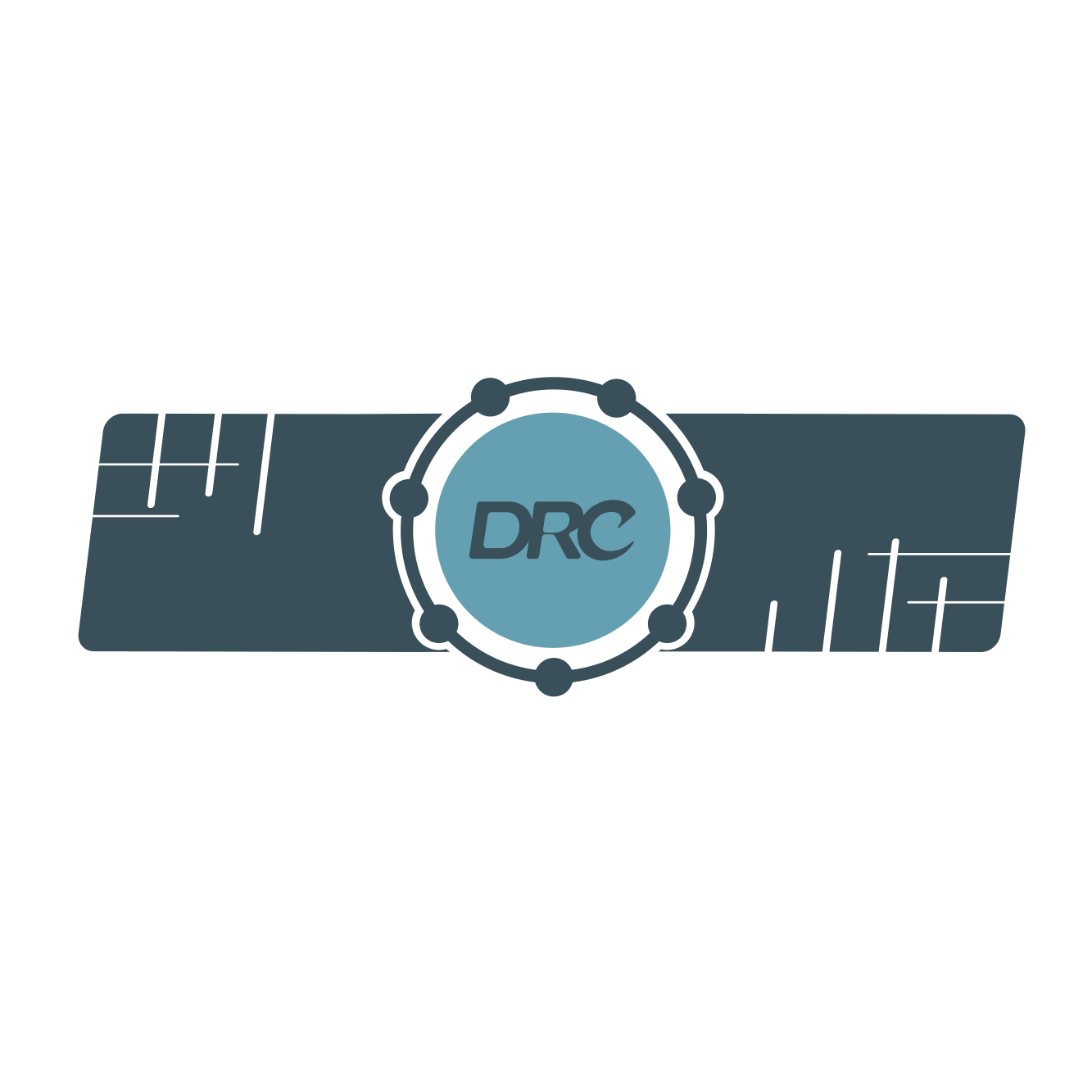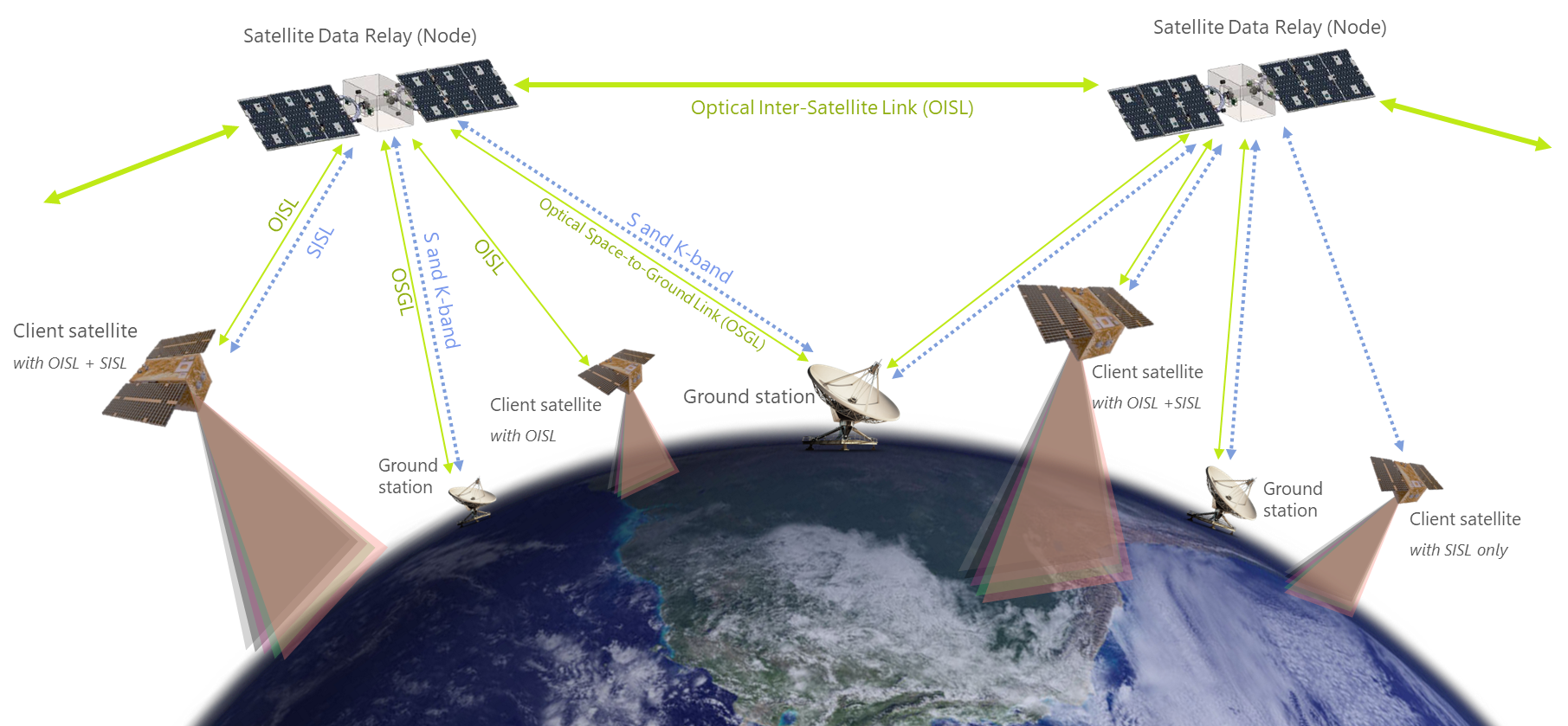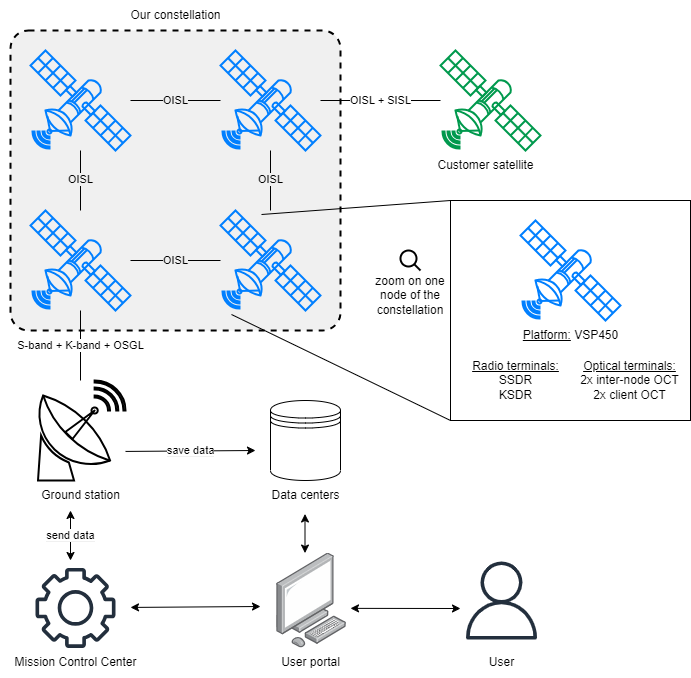
-
StatusOngoing
-
Status date2025-06-10
-
Activity Code3A.205
The Data Relay Constellation (DRC) aims to significantly enhance satellite communications by deploying relay satellites that function as "ground stations in space".
Its primary objectives include establishing European sovereignty in the manufacturing and operation of satellite communication infrastructure, thus reducing reliance on external entities. The project seeks a tenfold improvement in satellite telecommand and telemetry (TC/TM) capabilities, targeting at least 90% connectivity availability and minimal latency (<120 seconds nominally).
Additionally, the DRC is designed to revolutionise Earth Observation (EO) data transfer, ensuring continuous connections with speeds of 2.5 Gbps or higher. By combining optical inter-satellite links and robust Radio Frequency (RF) links (S-band, K-band), the constellation provides reliable, efficient, and rapid data relay, significantly shortening the decision-making loop for Earth observation applications.
Ultimately, the DRC fosters independent European capabilities, strengthens critical satellite infrastructure, and enhances responsiveness in satellite-based missions.

Key challenges of the Data Relay Constellation include achieving reliable optical inter-satellite links and ensuring continuous high-speed communication despite satellite movement and alignment complexities. Managing signal interference, particularly with RF (S-band, K-band), presents technical hurdles.
Additionally, deploying strategically positioned ground stations globally requires addressing geopolitical, regulatory, and logistical challenges. Balancing cost-efficiency, technology maturity, and maintaining European sovereignty in space-based communications infrastructure adds complexity.
Lastly, ensuring compatibility and interoperability with existing and future satellite systems, while meeting ambitious latency and availability targets (>90% connectivity, <120-second latency), is critical.
The Data Relay Constellation (DRC) offers significant advantages over existing satellite relay solutions by dramatically enhancing data relay speed, reducing latency, and improving availability. Unlike traditional ground-based stations constrained by geography and limited coverage, the DRC's satellite nodes provide continuous global coverage, enabling near-real-time telecommand, telemetry, and high-volume Earth Observation data transfers. With targeted connection availability greater than 90% and latency under 120 seconds, the DRC vastly outperforms conventional ground-station-only systems, which typically suffer from extended communication delays.
The integration of advanced optical communication terminals ensures extremely high data rates (≥2.5 Gbps), surpassing traditional RF-based competitor solutions. Furthermore, the DRC supports European sovereignty by leveraging European-developed technologies and infrastructure, mitigating geopolitical and regulatory risks associated with competitor systems relying heavily on external providers. By enabling rapid, secure, and efficient satellite communications, the DRC significantly accelerates decision-making processes for users, especially in critical domains like disaster response, security, and environmental monitoring, offering a uniquely responsive and secure solution in the satellite communication market.
The Data Relay Constellation (DRC) is designed to deliver exceptional satellite connectivity, supported by advanced technological capabilities and robust system components. At its core are relay satellites serving as communication hubs equipped with both optical and RF (S-band and K-band) communication terminals, ensuring continuous, high-speed connectivity. The use of Optical Inter-Satellite Links (OISLs) enables unprecedented data rates (≥2.5 Gbps) between satellites, significantly surpassing traditional RF-only systems.
The ground segment comprises strategically deployed optical and RF ground stations, coordinated by a centralised Mission Control Centre (MCC), responsible for efficient operations, dynamic routing, and comprehensive system monitoring. This ensures global coverage and minimises latency, maintaining >90% communication availability with latency under 120 seconds.
Furthermore, the DRC integrates an advanced Network Management System, utilising MPLS-based routing algorithms to optimise data flow, quickly adapt to network changes, and maintain robust connectivity. The user segment offers an intuitive, real-time web interface and Application Programming Interfaces (APIs), enabling seamless scheduling, tasking, and monitoring, streamlining operations for satellite operators.
Collectively, these components position the DRC as a superior, responsive, and sovereign solution, providing users rapid data relay and actionable insights, critical in Earth observation and satellite operational missions.
The architecture of the Data Relay Constellation (DRC) consists of an integrated network comprising space, ground, and user segments. The space segment features node satellites in low Earth orbit, equipped with Optical Communication Terminals (OCTs) compliant with Space Development Agency standards, and robust S-band and K-band RF links. These satellites communicate with client satellites and each other via high-speed Optical Inter-Satellite Links (OISLs) at ≥2.5 Gbps, providing reliable data relay and minimal latency.
The ground segment includes a global network of strategically placed optical and RF ground stations, ensuring continuous connectivity and data throughput. These stations connect seamlessly to a centralised Mission Control Centre (MCC), responsible for satellite operation, monitoring, dynamic routing table management, and system optimisation.
The user segment provides an intuitive web interface and API, enabling efficient scheduling, monitoring, and management of satellite communications and data flows.
Collectively, this integrated architecture ensures continuous, high-speed connectivity, dramatically reduces communication latency, and improves data relay efficiency. The DRC’s system design addresses connectivity bottlenecks in traditional satellite communications, supporting real-time mission-critical decision-making and ensuring European sovereignty in satellite infrastructure.

The project plan follows structured phases:
- Phase A (Conceptual Design): Mission definition, system architecture, preliminary risk assessment (Milestone: System Requirements Review - SRR).
- Phase B (Preliminary Design): Subsystem specifications, technical trade-offs, and preliminary testing plans (Milestone: Preliminary Design Review - PDR).
- Phase C (Detailed Design): Final subsystem engineering, prototyping, and validation testing (Milestone: Critical Design Review - CDR).
Phase D (Assembly, Integration, and Testing): Manufacturing, subsystem integration, system-level testing, and launch preparation (Milestone: Launch Readiness Review - LRR)

The Data Relay Constellation (DRC) project is currently in Phase B (Preliminary Design). Phase A was successfully completed, defining clear mission objectives, requirements, and initial architecture. Payload preliminary design is actively progressing and set for completion by June/July 2025, while platform design activities are on track, targeting completion by October/November 2025. Presently, subsystem technical trade-offs, risk mitigation, and validation simulations are underway. Preparations for detailed subsystem engineering and prototyping (Phase C) are about to commence, positioning the project for smooth transition toward detailed design and eventual operational deployment.



